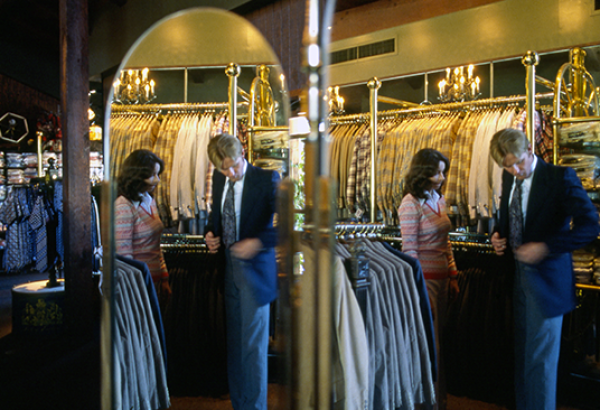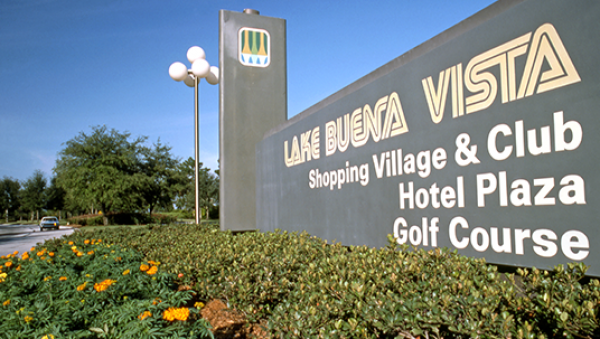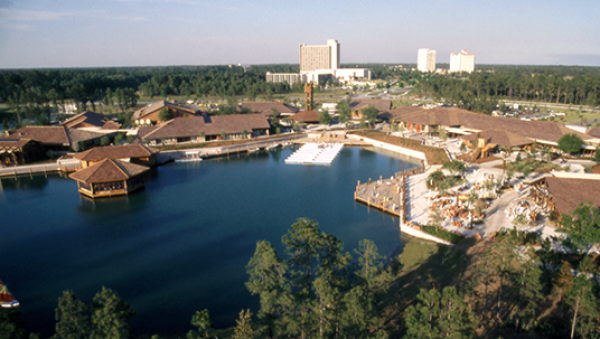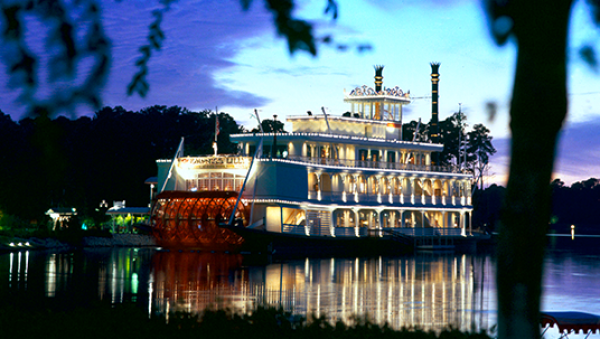Serving a new community
Image: Disney
Independent of how or why guests visited the Walt Disney World campus, they’d still share the same needs. Those included food, shopping, and recreation. While strategists spun their wheels trying to find a palpable version of EPCOT, they could do SOMETHING with part of the land. Critically, this entertainment section of the Disney land could build an evergreen revenue stream for the company, one they sorely needed in the early 1970s.
At first, Disney employees weren’t trying to sell merchandise to theme park tourists. The new establishment had a different target audience. Disney strategists recognized that the quickest way to infiltrate the community and become trusted new neighbors was by providing services to the locals. Of course, Disney planned to ship “the locals” into Florida rather than sell to the ones already there.
Overseers plotted the Lake Buena Vista community as a place where Disney fans and employees would live, assuming that they’d move to EPCOT to enjoy the utopia. They’d presumably spend all their money on Disney goods and services while living there, and they’d have to work for the company in some field to remain. That was one of Uncle Walt’s stated policies about the new community. The Buena Vista Shopping Village was an insidious way for the company to “pay” its residents with salaries that they’d quickly reinvest in the local economy, all of which was controlled by Disney.
Image: Disney
This strategy fell by the wayside as the reality of Walt Disney’s absence became to hit home. His utopia would never come to fruition, and Disney employees wouldn’t reinvest their salaries on Disney goods and services. Wait a second. That part kind of came true. Anyway, the point is that the plans for this region of land were decidedly corporate.
The change came when Disney modified the target audience. At the start of 1972, they settled on the idea of selling one- and two-bedroom villa homes to other corporations. Internally, Disney described their new community as the Lake Buena Vista Club, a themed community sharing the intimacy of Disneyland, only in a much larger overall region, Walt Disney World. The overseers felt that demand for Walt Disney World would cause a new kind of land rush. Workers outside of Disney would want to visit so much that clever corporations could incentivize them. The best employees during a given quarter/year would earn the right to stay at a villa on the Walt Disney World campus.
The premise was misleading. The path from the villas to the fun part of the area, Magic Kingdom, was many years away from becoming convenient. Nobody living there would feel close to the park even though they technically were. Still, Disney’s marketing team went above and beyond in selling this real estate development. They described it as “the good life,” promising world-class golf, dining excursions so elitist that wine captains handled the pairings, and the greatest social scene this side of Vegas.
The whole thing was over the top, but the underlying premise was simple. Before Disney could build EPCOT, they had to, you know, build a city. The running joke about Lake Buena Vista was that it was the experimental prototype of EPCOT. However, in a way, the members of the Lake Buena Vista Club were actually the forerunners to the Disney Vacation Club.
Prized pets, baked goods, and the Captain’s Tower
Image: Disney
Equating the Lake Buena Vista Shopping Village of the 1970s to the Disney Springs of today is like comparing a silent movie from 1908 to Inception. We’ve come a long way, baby. That doesn’t diminish the achievement of the initial iteration of the premise, though.
From the beginning, this shopping complex showed entrepreneurial promise. Impeccably positioned near State Road 535, the development fittingly rested on Preview Boulevard (near the legendary Preview Center) just beside Lake Buena Vista, a watery parcel of land that Disney owned.
In fact, Disney had such power over the Florida government thanks to the Reedy Creek Improvement District that they could determine the location of the water. The autonomy they received in the agreement was so wide-ranging that they had the ability to name and divide the acreage as they saw fit. Disney actually carved up some of Bay Lake and some previously unincorporated land to build Buena Vista Lake, the name reflecting the street address of The Walt Disney Company in Burbank, California.
Once corporate execs understood who was going to live in the fledgling community and visit the Lake Buena Vista Shopping Village, they knew how to build it. Their consumers weren’t the corporate power brokers Disney had anticipated. Instead, they were theme park tourists like you and me, only the 1970s equivalent, guests who were also interested in a second home. It was a “town” of itinerant visitors, meaning that this entertainment district would always feature guests flush with money. Everyone loosens their wallet while traveling. Strategists could do the math from there.
During its opening in March of 1975, the new shopping village featured upscale entertainment options. Their design was to sell the idea of Walt Disney World as the good life, a patrician escape from society. Some of the earliest plans actually referred to the main throughway as Royale Circle, with one of the original ideas honored by loyal Disney execs. The Empress Lilly, named after Walt Disney’s wife, showed on the blueprints as an elegant paddleboat. It would offer the finest cuisine in the village.
Image: Disney
This particular concept has stood the test of time. You know it now as Paddlefish Restaurant although its more recognizable recent name was Fulton’s Crab House. When you eat here, you are dining precisely where Walt Disney intended when he drew up the plans for the Walt Disney World shopping district. That’s reason enough to book an Advance Dinner Reservation, right?
Other offerings on day one at Lake Buena Vista Shopping Village included an upscale home décor store named Bath Parlour, an early imitator of Williams and Sonoma known as Gourmet Pantry, and a party supply store with the glorious name of 2 R’s Read’n & Rite’n. The village also offered a showplace known as Captain’s Tower. It was a seasonal promotions office and a great place to take kids to give them a bird’s eye view of the area. Perhaps the most Disney-fied store at the shopping district was It’s a Small World After All, a venue that sold…you guessed it, children’s clothing. Forgive them their puns. It was the 1970s, my friends.
The other luxury store at the village was the most telling. Named Posh Pets, it catered to wealthy clientele in need of a new furry family friend. They also offered grooming and other luxury pet caretaking onsite. It was telling because Disney was fostering the perception that their visitors at Lake Buena Vista would develop an entire lifestyle there, up to and including pet ownership. Disney did everything they could to make guests feel like they were home, albeit at a huge price markup. Let’s be clear that anybody who bought man’s best friend here paid a stiff fee for Fido. That was the recurring theme of the first iteration of Disney Springs. History truly does repeat itself.





Comments
First, get an editor. This story rambled from one place to another, never making the point the headline of the story intended to.
Second, the conclusion of the story did match the headline in any way.
Third, the timeline was awful. Eighty percent of the story could have been called "Downtown Disney: A tale of Disney world's early years"
Try harder.
I remember going to "Disney Village" in the 80's and then Pleasure Island in my teenage years. I always found it odd that it had the same name as the "bad place" in Pinocchio where kids smoke cigars and turn into donkeys. That was a bit of weird unintended(?) synergy.
Great article but it seems only halfway done. Would love more insight into the different themed clubs of PI or it's transformation into Disney Springs and the rebooting of the story there.